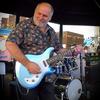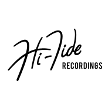Rio

Joined: May 22, 2006
Posts: 500
Hamilton, Ontario


|

Posted on Oct 31 2009 08:51 AM
Does anyone (everyone?) put reverb across the mix, either at mixdown or mastering? I generally haven't until now, but one of my bandmembers and I occasionally have a friendly debate about it.
I'm usually pretty sparing with use of reverb in the mixing process. Generally, I can get a pretty lively acoustic drum sound, especially if I add room mics, so I don't even feel the need to add reverb to my drums. Bass is totally dry, except I'll put a mic a few feet in front of the cab as well as taking a direct line; and, similarly, I mic the guitar amp with one close mic and then usually a ribbon about 4 feet in front; I don't any any reverb, other than the reverb from the amplifier (or outboard reverb, as the case may be). I record keys same as guitar. Vocals (yes, strange concept, I know) get a touch of reverb, with backing vocals getting a touch more.
Anyway, the debate is whether to put reverb across the mix, to sort of unify the whole. I've played around with some demos and used carefully, eah, it adds some additional dimension.
So, I'm curious about the experience of others. After all, who better to consult about the use of reverb than my fellow surf music afficonados?
— http://www.facebook.com/?sk=lf#!/rockinrio.delrosa
http://www.facebook.com/?sk=lf#!/TheHighTides
http://www.facebook.com/?sk=lf#!/pages/The-Blue-Demons
|
Kawentzmann

Joined: Feb 27, 2006
Posts: 1058
Berlin, Germany

|

Posted on Oct 31 2009 04:52 PM
I have never done it, but tested it once in a while. It gels the whole nicely, also at mastering, and Ive heard about old recordings where the mastering engineers did that. I like that it keeps the relations of the individual volumes - think Bert Kaempfert.
I didnt do it because I neither have a real room reverb nor a classy plate but only my springs and digital. With the reverbs I have I prefer tailoring each instruments dose.
— The Exotic Guitar of Kahuna Kawentzmann
You can get the boy out of the Keynes era, but you can’t get the Keynes era out of the boy.
|
dp

Joined: Feb 26, 2006
Posts: 3546
mojave desert, california





|

Posted on Nov 02 2009 12:07 AM
like anything...it depends...
it depends on what you're striving for. I have added "whole mix" reverberation before and it sounds pretty cool...other times, I've left off the "whole mix" reverberation because it sounded overkill and annoying and too harsh...
moderation is the key, I suppose...
|
dp

Joined: Feb 26, 2006
Posts: 3546
mojave desert, california





|

Posted on Nov 02 2009 12:11 AM
I don't like much reverb on the bass, or bass drum...
and too much on cymbals can be brutal.
a bit on acoustic guitar is nice, but there's a sweet-spot...
on snares, it can make for mighty impressive CRACK or SMACK...
on individual percussion (claves, bells, bongos, timbales etc) it can be a Godsend.
On a mix, it can add a room-like dimension...almost a 3-D space if used well...
|
estreet

Joined: Mar 17, 2007
Posts: 839
United Kingdom


|

Posted on Nov 02 2009 03:43 AM
It's not unheard of for reverb to be added to a mix in professional mastering suites but caution is definitely the key.
I find one of the big mistakes that people get into with reverb is in trying to 'cover' one reverb with another. For example: a band records in a living room and even if it was a close-mic'd recording there will be a massive amount of early reflection information especially on the drums - which makes it sound like it's in a living room. Therefore there's a temptation to add a wad of long reverb to everything in order to make it sound like it was recorded somewhere more interesting - and this rarely works as the early reflections are so strong and characteristic. If you want to use artificial reverb convincingly then the aim is to get the original recording as dry as possible, unless you have a nice sounding (and big) room. You will also want to use a very nice-sounding reverb unit if you are using a blanket effect otherwise it will sound either un-noticable or harsh.
If you are adding reverb to a mix, then you can keep it off the kick-drum and bass quite a lot by using an HPF setting on the input that filters out anything from under 400hz or so from being processed. Most decent reverb devices, either hardware or software, will let you do this.
Hiring a nice room to record in with a pleasing acoustic and walls at least 10ft away from the drums is the best way. With carpet on the floor to stop the ER's there and a high or acoustic ceiling - You probably you won't want to add any then. Some modern function rooms are good for this. Church halls may be OK, but it's a big reverb that can be uncontrollable.
— http://www.myspace.com/thepashuns
Youth and enthusiasm are no match for age and treachery.
|
































